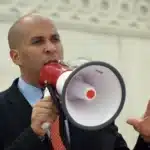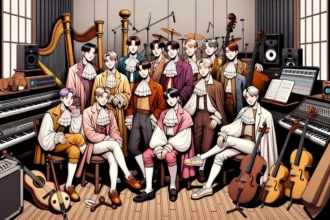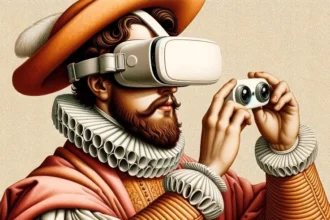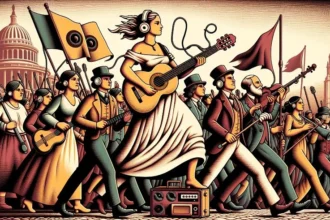The Spectrum of Urban Precarity Through Political Art
In the intricate mosaic of modern cities, urban precarity stands as an unavoidable reality, palpably present at the fringes of numerous global metropolises. This article endeavors to explore the multifaceted ways in which urban poverty, especially in the Global South, is represented and transformed through political art. Delving into this analysis, we navigate the complex dialogue between art, urbanism, and social politics, unveiling how the artistic portrayal of marginalized spaces not only reflects but often shapes public perception of poverty and inequality.
- The Spectrum of Urban Precarity Through Political Art
- Visualizing Urban Poverty: The Art of Representation
- The Racialized Lens : Consuming Urban Images
- Artistic Interventions in the Global South: Aestheticized Realities
- Beyond Spectacle: Art as a Political Statement
- Embracing a Humanizing Aesthetic : The Path Forward
- Conclusion: Reframing Urban Precarity Through Art
Focusing on the works of European artists, we unravel the process of image-making where slums, such as favelas and shanty towns, are transformed into iconic life worlds of the poor. These representations, fluctuating between romanticized despair and nostalgic longing for a simpler life, frequently detach from the lived social realities of their inhabitants, creating a paradigm where the image simultaneously critiques and perpetuates inequalities.
This analysis is structured into five main sections. Each section concentrates on a critical aspect of the artistic representation of urban precarity: from racialized representations and their consumption, through specific artistic projects in the Global South, to alternative artistic practices aiming to visualize and humanize the struggle of urban marginalized communities. Our goal is to offer a critical and reflective perspective that deepens the understanding of how art, in its interplay with politics and society, can serve both as a vehicle of critique and a perpetuator of stereotypical views of urban poverty.
Visualizing Urban Poverty: The Art of Representation
In the realm of political art, the representation of urban precarity emerges as a significant yet complex subject. This section delves into the artistic portrayal of poverty in urban settings, primarily in the Global South, and the implications such depictions carry for public perception and social consciousness.
The artistic depiction of slums and ghettos frequently intersects with racial and ethnic dimensions.
The practice of representing urban precarity often involves a paradoxical blend of aestheticization and critique. Artists, predominantly from Europe, have engaged in creating vivid portrayals of favelas, ghettos, and shanty towns. These depictions frequently oscillate between romanticized despair and a nostalgic yearning for a simpler, albeit impoverished, existence. This romanticization, while evoking empathy, risks oversimplifying or even glamorizing the harsh realities of life in these marginalized communities.
A critical aspect of these representations is the detachment they often exhibit from the actual social and living conditions of the inhabitants. This detachment is not just a physical or geographic distance but also a conceptual one. The urban poor are frequently depicted as passive subjects or, in some cases, completely absent from their own narrative. Such portrayals inadvertently contribute to a form of visual tokenism where the essence of urban precarity is captured more as a symbolic motif rather than a reflection of lived experiences.
The art of representing urban poverty thus raises essential questions about the ethics and responsibilities of image-making. While these artistic endeavors can draw much-needed attention to neglected urban areas and the plights of their residents, they also run the risk of perpetuating stereotypes or commodifying poverty. It becomes crucial to strike a balance where art serves as a medium to highlight and critique urban precarity while maintaining a respectful and authentic connection to the communities it represents.
This paradoxical interplay between representation and reality in the context of urban precarity challenges both creators and consumers of art to reevaluate their perspectives. It urges a deeper contemplation on how art not only mirrors but can also influence societal attitudes towards marginalized urban communities.
The Racialized Lens : Consuming Urban Images
In the context of the Global South, the artistic depiction of slums and ghettos frequently intersects with racial and ethnic dimensions. Notably, the representation of African American ghettos in North America often centralizes racialized human forms, projecting a narrative steeped in stereotypes and societal prejudices. Conversely, in the representation of shanty towns and favelas in the Global South, there is a noticeable trend towards erasing or downplaying racial markers. This leads to a unique form of visual erasure, where the inhabitants, often diverse in their racial and ethnic identities, are either rendered invisible or homogenized within the broader narrative of poverty.
The consumption of these racialized representations in Europe and other parts of the Western world often reflects a complex interplay of fascination, exoticization, and sometimes paternalistic sympathies. Iconic representations of ‘slum life’ are frequently circulated as commodity forms, appealing to a certain romanticized or sensationalized view of poverty. This process can inadvertently reinforce racial and ethnic stereotypes, presenting these communities not as diverse and dynamic but as monolithic symbols of deprivation.
This racialized framing of urban precarity carries significant implications. It not only shapes how these communities are perceived globally but also impacts how their struggles and narratives are understood and addressed. The critical lens of racialization in art reveals a need for more nuanced and authentic representations that recognize the diversity and complexity of life in marginalized urban areas. It calls for a shift from mere visual consumption to a deeper engagement with the socio-political realities these images represent.
Artistic Interventions in the Global South: Aestheticized Realities
Notable among these interventions is the Favela Painting project, conceived by a Dutch firm in Brazil. This project aimed to ‘rebrand’ Brazilian cities through vibrant, colorful makeovers of favela buildings. While the intention was to bridge community art, urban planning, and social design, the outcome presents a complex tapestry of aesthetics, ethics, and socio-political implications. The painted cityscapes, though visually striking, raise questions about the masking of the underlying socio-economic realities. This superficial beautification often glosses over the visible signs of struggle and deprivation, creating an illusion of wellbeing and vibrancy that diverges sharply from the lived experiences of the inhabitants.
While art has the power to draw attention to overlooked societal issues, it also bears the risk of commodifying or misrepresenting the very struggles it seeks to illuminate.
Similarly, other European artists have approached the urban landscapes of the Global South, employing techniques that overlay modernist architectural aesthetics onto the organic, often chaotic structures of slums. These artistic reinterpretations, while innovative, can lead to a form of visual estrangement. The architectural and cultural uniqueness of these communities is often subsumed under a homogenizing aesthetic vision, potentially erasing the identity and agency of the residents.
These artistic projects, while they bring global attention to the urban margins, often do so at the cost of an authentic representation of the conditions and voices of those who inhabit these spaces. They underscore the complex relationship between art and urban poverty, where the aestheticization of struggle can risk turning a critical societal issue into a spectacle for global consumption. This phenomenon calls for a critical examination of the role of art in both representing and shaping the realities of urban precarity.
Beyond Spectacle: Art as a Political Statement
Artistic representations of urban poverty, when approached with a critical and empathetic lens, can serve as powerful tools for unmasking inequalities and human struggle. A key aspect of this process is the ability of art to make visible the often-overlooked or deliberately obscured dimensions of life in marginalized urban areas. By drawing attention to the geography of the city and the lived experiences of its residents, art can challenge prevailing narratives and foster a deeper understanding of urban struggles.
Explore Books Written by Our Contributors
For instance, some artists have used their work to highlight the material effects of global capitalism and state disinterest on the urban poor. By altering and estranging urban images, these artists provide insight into the complex dynamics of life in slums, favelas, and ghettos. They use their art to question and critique the existing social order, turning urban architecture into a canvas that tells stories of resistance, resilience, and the human condition.
However, this representational strategy is not without its challenges. It requires a delicate balance to avoid simplifying or sensationalizing the complexities of urban poverty. The goal is to create art that not only captures the attention of a global audience but also respects and amplifies the voices of those who inhabit these spaces.
In this regard, the role of the artist as a political commentator becomes crucial. Through their work, artists have the potential to reshape public perceptions and foster a more nuanced understanding of urban precarity. They can move beyond creating mere spectacles to generating meaningful conversations about social justice, equity, and human rights in the context of urban environments. This section underscores the transformative power of art in redefining the optics of urban dispossession and advocating for a more inclusive and equitable society.
Embracing a Humanizing Aesthetic : The Path Forward
A paradigmatic example of this humanizing aesthetic is found in the work of French photographer JR. Known for his large-scale public art installations, JR’s approach stands in stark contrast to more detached or superficial artistic interventions. His work seeks to make visible those often ignored or overlooked by society – the poor, the marginalized, the forgotten. By photographing individuals from these communities and displaying their images on a grand scale in public spaces, JR’s art disrupts the everyday landscape, forcing a confrontation with the human faces of urban precarity.
This approach represents a significant shift in the portrayal of urban poverty. Instead of depicting the physical structures of slums and favelas, JR focuses on the residents themselves, granting them a presence and dignity often denied in mainstream representations. His work is not about speaking for these communities but rather providing a platform for self-representation and narrative control.
JR’s method underscores the importance of direct engagement with the subjects of art, recognizing their agency and individuality. This humanizing aesthetic challenges viewers to not only acknowledge but also empathize with the lived experiences of those depicted. It’s an approach that aligns closely with the principles of participatory art, where the process of creation involves collaboration with the community, ensuring that their stories are told authentically and respectfully.
The potential of this humanizing approach in art is vast. It offers a pathway for artists to engage with urban precarity in a manner that is not only visually compelling but also socially and politically meaningful. By centering the voices and experiences of those living in precarious urban environments, art can play a crucial role in fostering understanding, compassion, and, ultimately, social change.
Conclusion: Reframing Urban Precarity Through Art
In conclusion, the exploration of urban precarity through the lens of political art reveals a complex interplay between representation, reality, and responsibility. This article has traversed the diverse ways in which artists depict urban poverty, from aestheticized portrayals to humanizing narratives, each carrying distinct implications for the perception and understanding of urban marginalization.
The critical examination of these artistic endeavors underscores the need for a nuanced approach to representing urban precarity. While art has the power to draw attention to overlooked societal issues, it also bears the risk of commodifying or misrepresenting the very struggles it seeks to illuminate. The challenge lies in creating art that not only captivates visually but also engages authentically with the realities of marginalized communities.
Moving forward, the path lies in embracing a humanizing aesthetic that respects the dignity and agency of the urban poor. Art can be a powerful medium for social change, but it must be wielded with care and empathy. The true measure of its success lies not in its aesthetic appeal alone but in its capacity to foster understanding, challenge stereotypes, and inspire action towards a more just and equitable world.
Adapted from an academic article for a wider audience, under license CC BY 4.0









